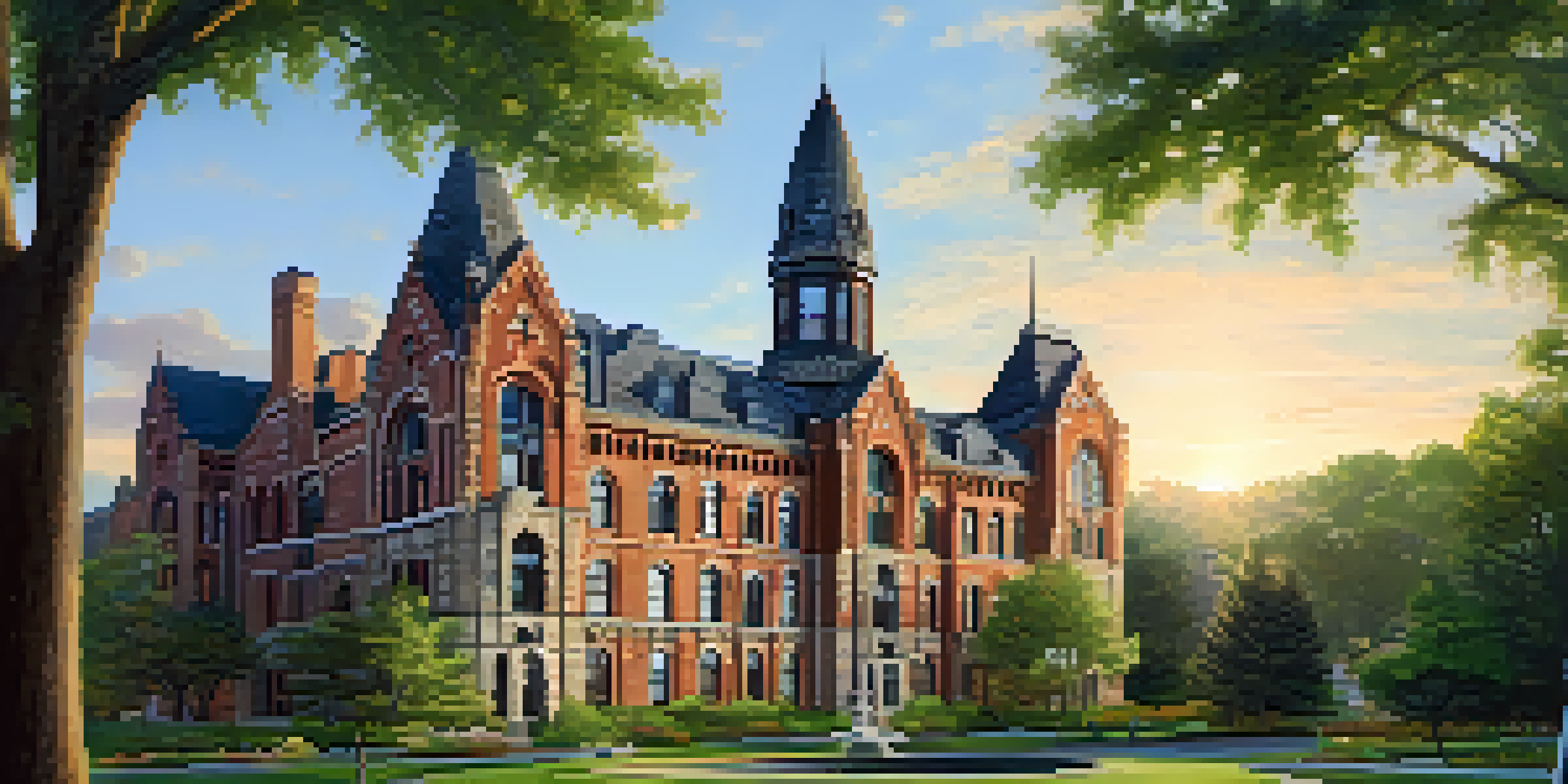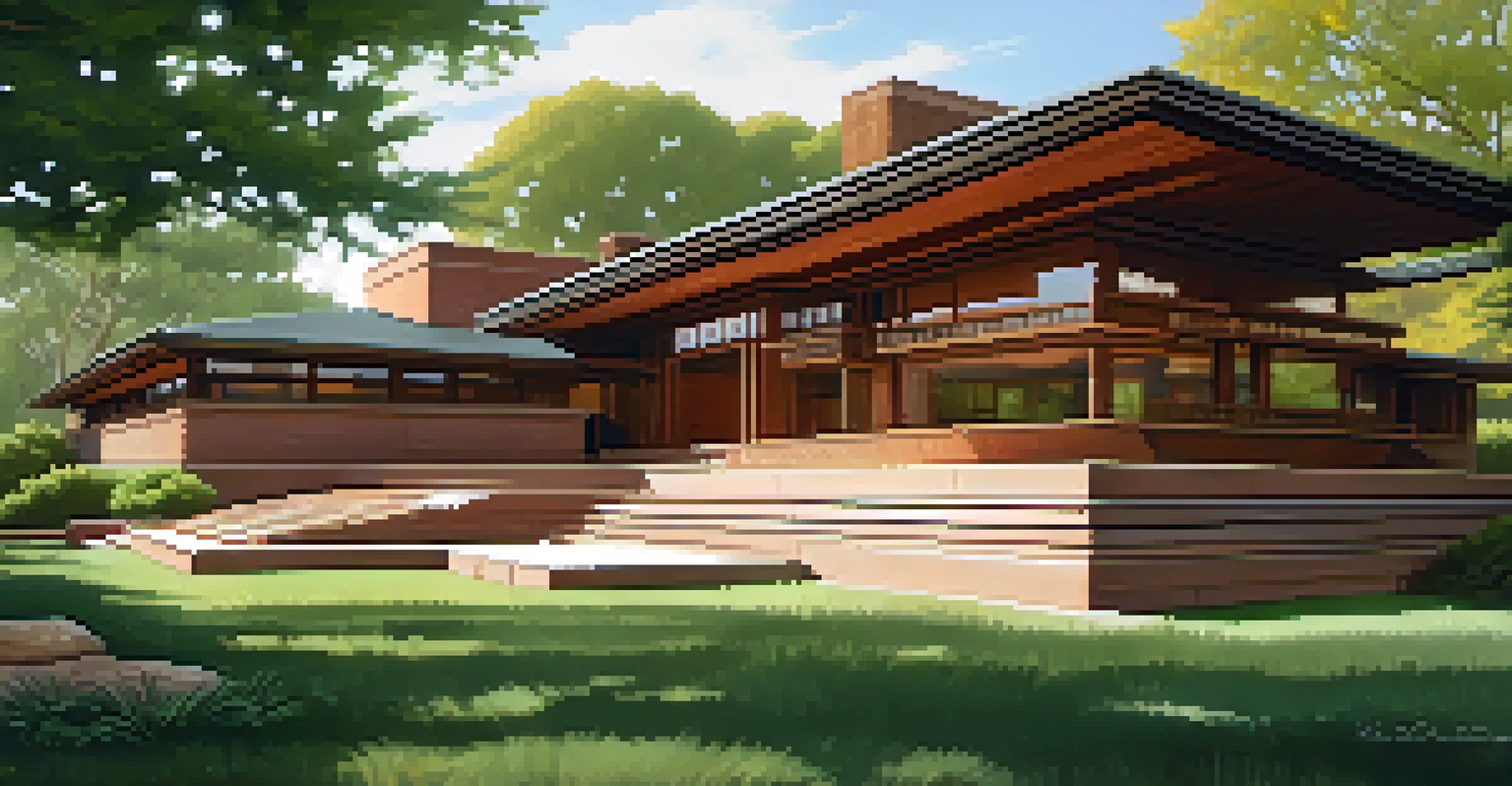Exploring Buffalo's Architectural Heritage: Styles and Influence

A Brief History of Buffalo's Architectural Landscape
Buffalo's architectural heritage is as rich as its history, reflecting the city's growth from a small settlement to a bustling urban center in the 19th century. This evolution was driven by industrialization and immigration, which brought diverse influences to the city's design. As a result, Buffalo showcases a unique blend of styles that narrate its story through every building.
A great architect is not a creator but a curator of the past, present, and future.
Key figures like Frederick Law Olmsted and Louis Sullivan played pivotal roles in shaping the city’s architectural narrative. Olmsted, known for his landscape designs, emphasized the importance of integrating nature into urban spaces. Meanwhile, Sullivan's work introduced the idea of form following function, a principle that significantly influenced Buffalo's commercial architecture.
Today, walking through Buffalo feels like flipping through a history book, with each era represented in its structures. From the grandeur of the Richardson Olmsted Complex to the sleek lines of the Darwin D. Martin House, the city's architecture tells a compelling story of progress and identity.
The Influence of the Richardsonian Romanesque Style
One of the most iconic styles in Buffalo is the Richardsonian Romanesque, characterized by its robust stone structures and rounded arches. This style, named after architect Henry Hobson Richardson, is epitomized by the stunning Buffalo State Asylum for the Insane, which showcases intricate masonry and a sense of grandeur. Its unique features, like asymmetrical facades and bold shapes, resonate with the city's artistic spirit.

Richardson's designs were born out of a desire to create buildings that felt both monumental and approachable. By employing local materials and emphasizing craftsmanship, he helped to establish a distinctly American architectural identity. The warmth of the stone and the whimsical shapes found in his buildings invite admiration and reflection.
Buffalo's Architectural Diversity
Buffalo's architectural landscape reflects its rich history, showcasing a blend of styles influenced by industrialization and notable architects.
Beyond aesthetics, the Richardsonian Romanesque style symbolizes Buffalo's commitment to mental health and community care, as seen in the asylum's original purpose. This architectural choice reflects a broader cultural shift towards understanding and compassion, showing how style can influence societal values.
Art Deco: A Beacon of Modernity in Buffalo
Art Deco emerged in Buffalo during the 1920s, bringing a fresh, modern flair to the architectural scene. This style is distinguished by its bold geometric patterns, vibrant colors, and luxurious materials, making buildings like the Buffalo City Hall iconic representations of this era. The skyscraper's ornate details and upward-reaching design symbolize the city’s optimism and growth during a transformative time.
Architecture is the learned game, correct and magnificent, of forms assembled in the light.
The influence of Art Deco extended beyond just commercial buildings; it permeated residential architecture as well. Homes from this period often feature streamlined forms and decorative elements that reflect the era's fascination with technology and progress. These structures not only showcase style but also embody the lifestyle aspirations of their inhabitants.
Art Deco's impact on Buffalo is a testament to the city's ability to embrace change while honoring its roots. The juxtaposition of modern design within a historical context creates a vibrant architectural tapestry that continues to inspire admiration and interest.
The Significance of Frank Lloyd Wright’s Influence
Frank Lloyd Wright’s influence can be felt throughout Buffalo, particularly in the design of the Darwin D. Martin House. This masterpiece exemplifies Wright's philosophy of organic architecture, where buildings harmoniously blend with their surroundings. The use of natural materials, open floor plans, and integration with the landscape are hallmarks of his approach that continue to resonate with architects today.
Wright's vision extended beyond individual homes; he sought to create a sense of community through his designs. The Martin House complex includes several structures that work in concert, reflecting his belief that architecture should serve the needs of its inhabitants. This holistic approach is a significant part of Buffalo's architectural legacy.
Impact of Key Architectural Styles
Styles like Richardsonian Romanesque, Art Deco, and Beaux-Arts have significantly shaped Buffalo's identity, each representing distinct cultural and historical moments.
Visiting the Martin House offers a glimpse into Wright's genius and how it shaped Buffalo's architectural identity. It stands as a reminder of the importance of innovative thinking and the impact of one architect's vision on an entire city.
Beaux-Arts Architecture: Elegance and Grandeur
The Beaux-Arts style, arriving in the late 19th century, brought a sense of elegance and grandeur to Buffalo’s architectural landscape. Characterized by its classical details, symmetry, and elaborate ornamentation, this style can be seen in the majestic Buffalo Central Terminal. The terminal's soaring arches and intricate cornices create a sense of awe, embodying the city’s ambition during the peak of the railroad era.
Beaux-Arts architecture often draws inspiration from classical Greek and Roman designs, which can feel both timeless and monumental. This connection to history provides a sense of continuity, linking Buffalo's past with its present. The style also reflects the aspirations of a growing city, showcasing its commitment to beauty and functionality in public spaces.
The impact of Beaux-Arts can still be felt today, as many of these buildings serve as cultural landmarks. They not only highlight Buffalo's architectural diversity but also remind us of the city’s rich history and the people who shaped it through their vision and craftsmanship.
Modernism and Its Emergence in Buffalo
Modernism began to take root in Buffalo in the mid-20th century, marking a departure from traditional styles towards simplicity and functionality. This movement emphasized clean lines, open spaces, and minimal ornamentation, as seen in the iconic Albright-Knox Art Gallery. The building’s sleek design and use of glass demonstrate a forward-thinking approach to architecture that prioritizes light and space.
The philosophy behind modernism was to create structures that reflected contemporary life, breaking away from historical precedents. This can be seen in the way Buffalo embraced new materials and technologies, allowing architects to innovate and redefine what buildings could be. The result is a dynamic urban landscape that continues to evolve.
Commitment to Preservation
Efforts to preserve Buffalo's architectural heritage highlight the community's appreciation for its past and the desire to integrate history with modern development.
Buffalo's modernist structures not only serve as functional spaces but also as artistic statements. They challenge our perceptions of architecture and encourage us to appreciate the beauty found in simplicity, demonstrating that innovation is a key component of the city's architectural heritage.
Preserving Buffalo's Architectural Legacy
As Buffalo continues to grow and change, preserving its architectural heritage has become a vital focus for the community. Many organizations and initiatives are dedicated to restoring and maintaining historic buildings, ensuring that the city’s unique styles remain part of its identity. This commitment to preservation reflects a deep appreciation for the past and a desire to honor the stories these structures tell.
Efforts to revitalize neighborhoods often include integrating new developments with historic architecture, creating a harmonious blend of old and new. This approach not only enhances the aesthetic appeal but also fosters a sense of continuity and connection within the community. By valuing its architectural history, Buffalo is able to create spaces that resonate with both residents and visitors.

Ultimately, preserving Buffalo's architectural legacy is about more than just buildings; it’s about preserving the spirit and culture of the city. Each structure is a testament to the craftsmanship and vision of those who came before, reminding us of the importance of our roots as we look toward the future.